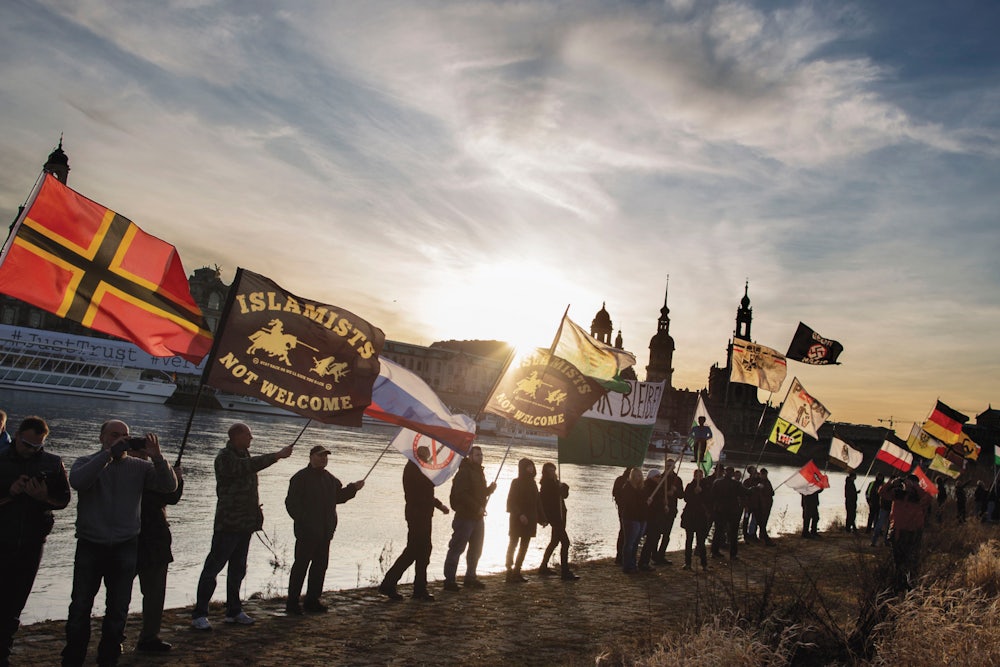On July 22, 2011, a Norwegian extremist named Anders Behring Breivik shot off an email to more than a thousand people. A self-identified fascist, Breivik attached a 1,500-page screed attacking Islam, cultural Marxism, feminism, and immigration. Titled “2083: A European Declaration of Independence,” the manifesto demanded the forced deportation of all Muslims from Europe. An hour and a half later, Breivik set off in a Volkswagen van to kill 77 people, first by detonating a fertilizer bomb in Oslo, then by gunning down teenagers at a summer camp on the island of Utoya. It was the bloodiest attack on Norwegian soil since World War II.
Breivik belonged to a group called the Norwegian Defense League, one of the many openly fascist movements that have cropped up all across Europe over the past decade, from Scandinavia to Germany, where, this past weekend, the far right won a stunning 13 percent of the vote in the German elections, enough to propel it into parliament for the first time in more than 60 years. In part, the rise of far-right nationalism is a reaction to the European Union, which sparked a backlash from an older generation of people who fear the loss of their identities as white Christians. As refugees streamed into Europe, those diffuse sentiments for a vanishing past have found easily identifiable targets. Pundits and politicians on the right have placed Islamophobia firmly at the center of the new movements. In Italy, the journalist Oriana Fallaci popularized the phrase “Eurabia” to demonize the continent’s growing population of Muslim immigrants. Even in Germany, which has engaged in an exemplary reckoning with its fascist past, the economist and politician Thilo Sarrazin wrote a runaway best-seller called Deutschland Schafft Sich Ab—Germany Is Destroying Itself—arguing that the upsurge in immigration has created a lower class that is dumber and more dependent on the state. That outlook laid the groundwork for the swift rise of Germany’s far-right populist party, the AfD: Four years ago, it earned less than five percent of the vote in the country’s elections. Last weekend, it won nearly three times that, an astonishing coup that throws the growing power of nationalism and Islamophobia in Europe into sharp relief.
Photographer Espen Rasmussen has spent almost two years documenting the rise of far-right extremists not just in Germany, but all over Europe, from the Golden Dawn in Greece to neo-Nazis in Ukraine. Some, like the National Front in France and Britain First in the United Kingdom, have entered the political mainstream. Many sit in the EU Parliament, using the funds of an organization whose destruction they seek. And all draw from the memories of Europe’s fascist past, in the period between the two World Wars, seeking answers to Europe’s contemporary problems. By putting the Nazi paraphernalia of these groups so vividly on display, Rasmussen’s photographs force us to confront the reality that there are forces that want Europe to fall apart rather than pull together. It is sobering to realize how far and fast such hatred can travel.

SWEDEN Police in Stockholm wield batons to break up a violent rally by 600 members of the Nordic Resistance Movement, a neofascist group with branches across Northern Europe. At the rally, leaders of the group declared that Donald Trump’s election was a sign that “a world revolution is beginning.”
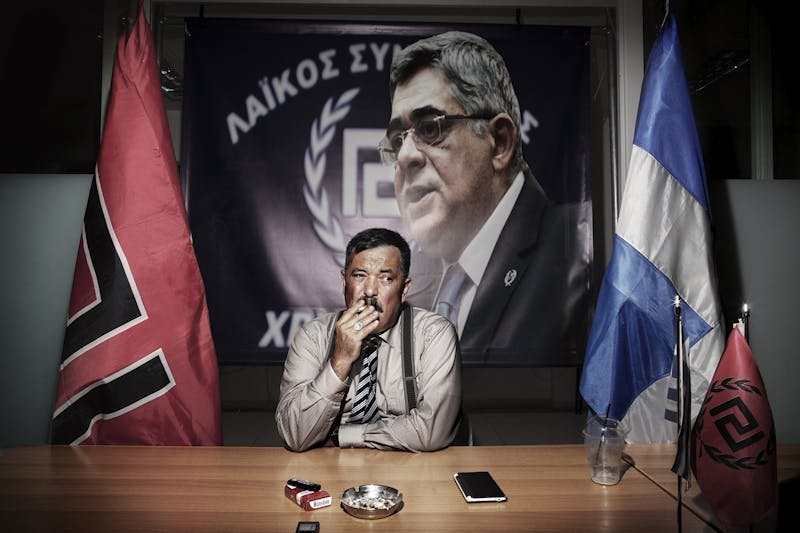
GREECE Christos Pappas, a member of parliament, is a leader of Golden Dawn, one of Europe’s most violent political groups. Since the onset of Greece’s debt crisis, the group has perpetrated more than 300 attacks on migrants. It is now Greece’s third-largest political party.

ITALY Fascist groups congregate at Mussolini’s tomb in Predappio, to commemorate his March on Rome. Support for the dictator has gone mainstream: Silvio Berlusconi—who merged his ruling party with the neofascist Alleanza Nazionale—has praised Mussolini for doing “some good things.”
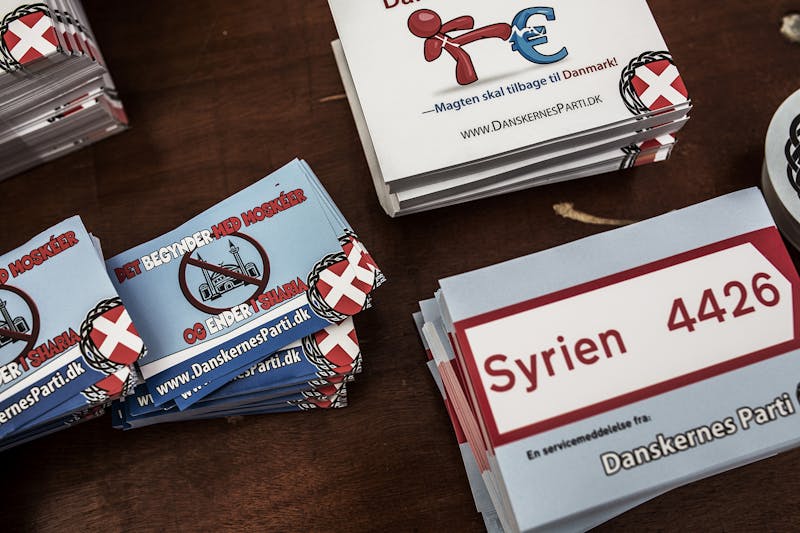
DENMARK Flyers at a rally for an ultranationalist political party. The country’s xenophobic right, long a fringe movement, now commands one-fifth of the Danish Parliament. “We must secure the existence of our people and a future for white children,” says Daniel Carlsen, the party’s founder.

UKRAINE Evgenij Stojka, a member of the country’s increasingly dangerous insurgency of neo-Nazis, playing with his daughter at home. As a young skinhead, Stojka “used to beat up immigrants. Didn’t matter if it was Jews, Muslims, Chinese, or leftists. I still hate them.”
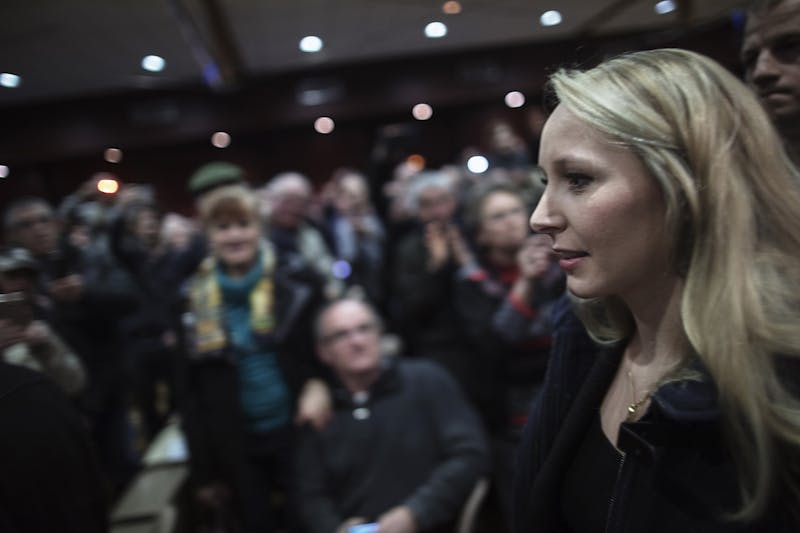
FRANCE Marion Maréchal-Le Pen of the National Front. Elected to parliament at age 22, she is considered even more of an anti-immigrant zealot than her aunt, Marine Le Pen.

NORWAY Kjersti Gilje, a member of the anti-immigrant Norwegian Defense League, prays for God to protect Norway against Islam’s “ideology of evil.” The group published a list of shopkeepers and cab drivers it suspected of being Muslim—much as Nazi sympathizers targeted Norwegian Jews before World War II.
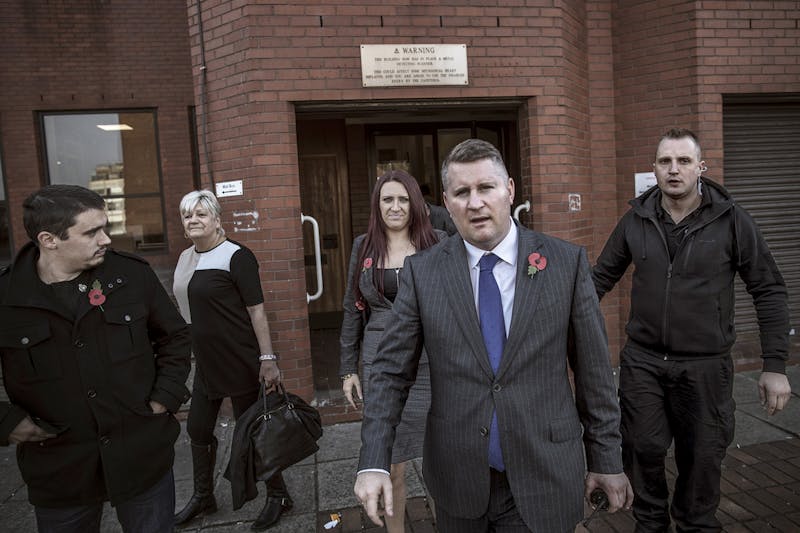
ENGLAND Members of Britain First, an ultranationalist party, leave court after their deputy leader was fined for heckling a Muslim woman. The party, which conducts “Christian patrols” and invades British mosques, saw its social-media profile soar during Brexit.
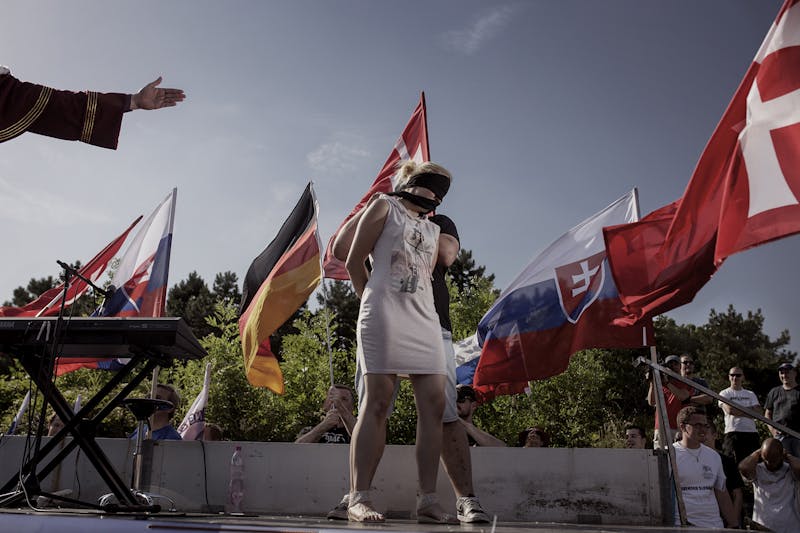
SLOVAKIA Far-right nationalists stage a mock kidnapping to dramatize how the European Union has taken Slovakia hostage. In response to the migrant crisis, the EU required its member states to accept refugees—a move that has sparked a fierce anti-Muslim backlash.

HUNGARY The 64 Counties Youth Movement, a far-right nationalist group, wants to reclaim territories the country lost after World War I. The group is allied with Jobbik, a nationalist party that has urged the government to “tally up people of Jewish ancestry” who “pose a national security risk.”
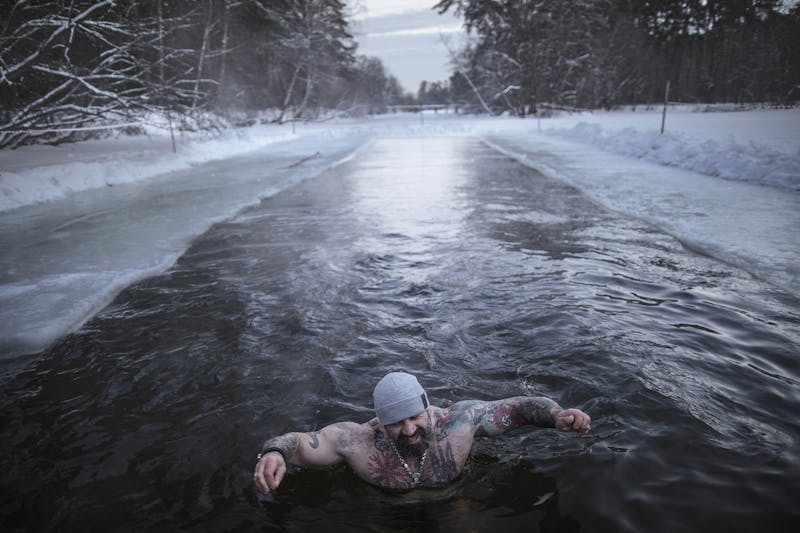
RUSSIA A member of the PPDM, a group of Nazi extremists, bathes in a Moscow lake. The group—which shuns drinking and smoking in its campaign to “purify” the Russian people—talks openly of attacking gays. Far-right extremists have killed over 600 people in Russia since 2004.
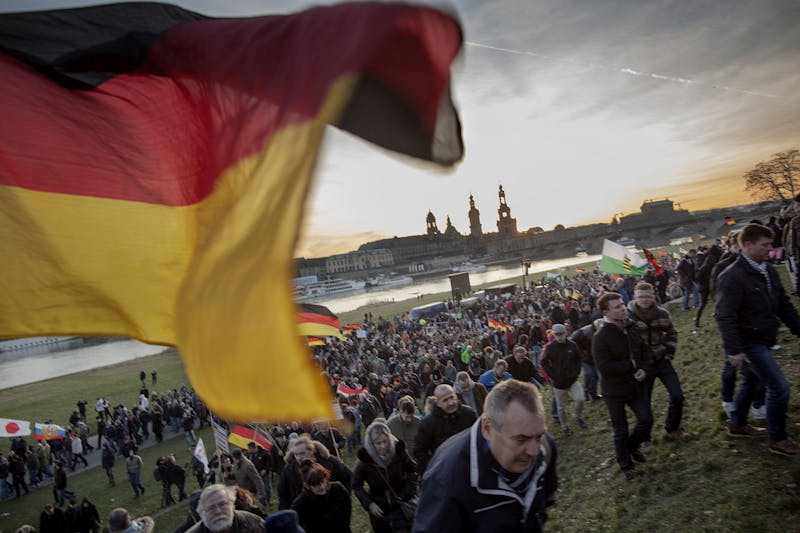
GERMANY PEGIDA, a group of “patriotic Europeans,” stages a protest in Dresden against immigrants and Muslims. One million new refugees arrived in Germany in 2015. The following year, hate crimes hit a record high.
Espen Rasmussen/Verdens Gang/Panos Pictures
